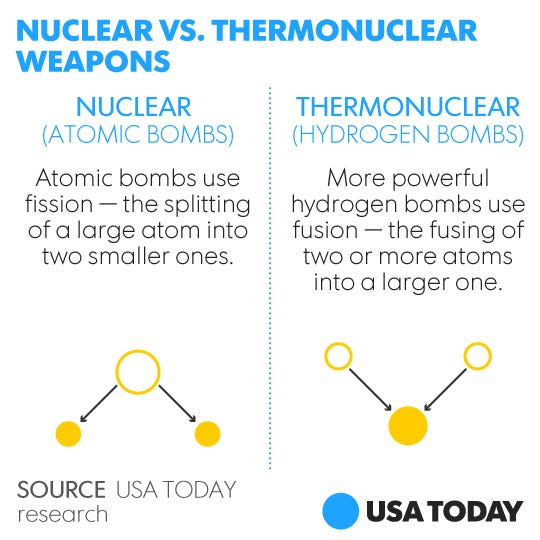H-bombs vs. A-bombs explained

TOKYO — How powerful are hydrogen bombs? Think of it this way: They use atomic bombs just as a trigger.
Atomic weapons like those previously tested by North Korea rely on nuclear fission to release energy — basically splitting atoms. The bombs dropped by the United States on Hiroshima and Nagasaki during World War II used this technology to release explosive power equivalent to about 15 and 20 kilotons (1,000 metric tons) of TNT, respectively.
Hydrogen bombs use nuclear fusion, in which atoms fuse together, to release even greater amounts of energy. The two-stage process is often referred to as a thermonuclear reaction. The first hydrogen bomb tested by the United States in November 1952 released the equivalent energy of 10,000 kilotons (or 10 megatons) of TNT.
If North Korea really has tested a hydrogen bomb, as it claims — and that remains a big “if” — it has joined a select group.
According to the Union of Concerned Scientists, the United States, Russia, Britain, France and China have nuclear arsenals composed of hydrogen weapons; Israel, India, and Pakistan are generally believed to have nuclear weapons that use only nuclear fission.
